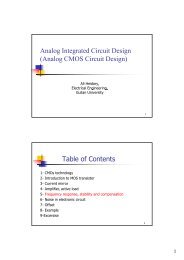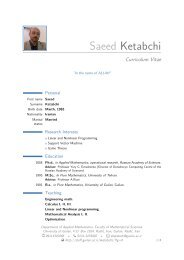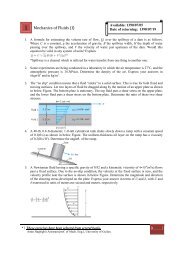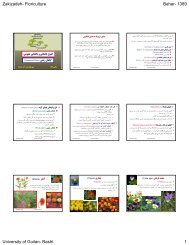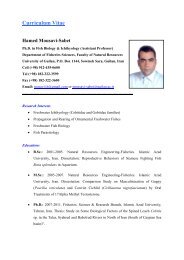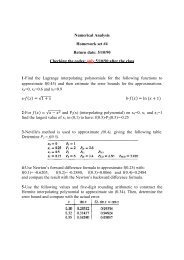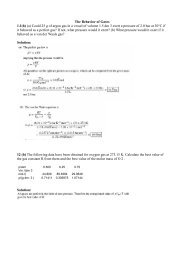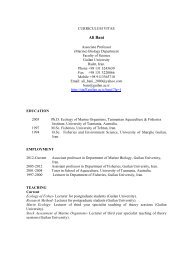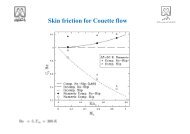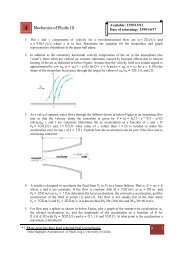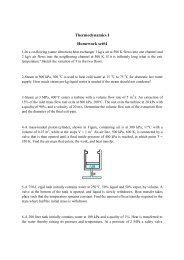Medical Tourism in Developing Countries
Medical Tourism in Developing Countries
Medical Tourism in Developing Countries
- No tags were found...
You also want an ePaper? Increase the reach of your titles
YUMPU automatically turns print PDFs into web optimized ePapers that Google loves.
Plastic Surgery is Not Peanuts ● 27deals with the <strong>in</strong>tangibility of services, and the separation of location ofproduction and consumption <strong>in</strong> space and time. Banga found that, becauseof the unique characteristics of services, namely nontransportability and<strong>in</strong>tangibility, there is a need for a new theory of trade <strong>in</strong> services. 33With respect to an <strong>in</strong>ternational legal framework to regulate trade <strong>in</strong>services, <strong>in</strong> 1995, the General Agreement on Trade <strong>in</strong> Services (GATS) was<strong>in</strong>troduced. It spelled out a system of legally enforceable conditions andrules for service trade and <strong>in</strong> the process confirmed how important trade<strong>in</strong> services had become. GATS dist<strong>in</strong>guished between four modes of supplyof services across borders. Mode 1 refers to the cross-border supply ofservices that does not require the physical movement of either supplier orcustomer. Mode 2 entails the movement of the customer to the locationwhere the supply is <strong>in</strong> order for consumption to occur. Mode 3 refers tothe supply of services <strong>in</strong> one country by legal entities from another country.F<strong>in</strong>ally, Mode 4 is the provision of services by providers who are temporarilymoved <strong>in</strong> order to provide the service. <strong>Medical</strong> tourism falls underMode 2, given that the patient moves to the country of the provider <strong>in</strong>order to consume medical care. Mode 3 is also relevant for this study<strong>in</strong>sofar as it <strong>in</strong>cludes the supply of services <strong>in</strong> one country by a legal entityorig<strong>in</strong>at<strong>in</strong>g <strong>in</strong> another country. That covers foreign ventures operat<strong>in</strong>g<strong>in</strong> LDCs.In conclusion, medical tourism could not have taken off <strong>in</strong> the absenceof a globalized environment <strong>in</strong> which there is an <strong>in</strong>crease <strong>in</strong> the importanceand trade of services. This environment is thus an enabler.Self-Perpetuat<strong>in</strong>g Circular Flows: <strong>Medical</strong> <strong>Tourism</strong>and Economic GrowthThis book proposes that medical tourism is related to economic growth <strong>in</strong>develop<strong>in</strong>g countries <strong>in</strong> two dist<strong>in</strong>ct ways. Accord<strong>in</strong>g to the first, discussedbelow, medical tourism br<strong>in</strong>gs about growth and development because it isa source of foreign currency, <strong>in</strong>vestment, and tax revenue. In turn, thatgrowth and development diffuses through the economy and results <strong>in</strong> economic<strong>in</strong>stitutions that can support further expansion of medical tourism.The second way <strong>in</strong> which medical tourism is related to economic growthhas to do with public health. While it is discussed <strong>in</strong> depth <strong>in</strong> chapter 7,suffice it to say here that medical tourism is a lucrative <strong>in</strong>dustry that earnsprofits that can <strong>in</strong> turn be used to improve public health. That <strong>in</strong> turnwill <strong>in</strong>crease labor productivity, human capital, and longevity, all of whichwill further enable the expansion of the medical tourism <strong>in</strong>dustry. In the<strong>in</strong>itial stages of medical tourism, it is unlikely that revenues will be large





